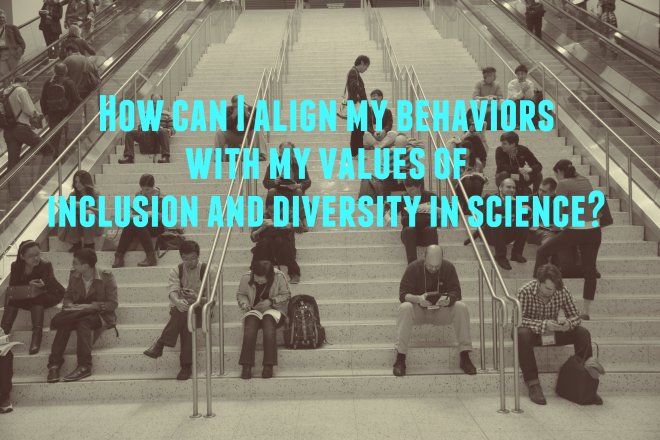Gabriela Popescu, University of Buffalo and chair of the Biophysical Society’s Committee for Professional Opportunities for Women, reflects on the gaps between our consciously held values and our implicit biases, and how we can work against those biases.
Like many, I believe that I genuinely value diversity, and think of myself as being inclusive and fair, striving to do the right thing (most of the time). Several months ago, I learned otherwise.
After listening to a talk by Dr. Mahzarin Banaji, a leading researcher on implicit bias, I was inspired to check on this belief!!! I took the test at Project Implicit and I was humbled to learn that like the many I aspire to enlighten, I need a good dose of enlightenment myself; like society as a whole, I too am unconsciously doubtful of women's professional commitment, ability, and talents, and therefore in situations where information is insufficient or inconclusive I tend to err on the side of...exclusion.

From Dr. Banaji I also learned that I do this not because deep down I am a mean person, but because through eons of evolution when left unchecked my brain decides for me that it is better to be safe than sorry. What to do? How can I align my behaviors with my consciously chosen values of inclusion and diversity in science, in leadership, and in everyday decisions?
Experts advise taking a minute to write down our commitment to fairness and inclusion, and our personal reasons for this commitment. I tried it, and at least for me it worked! When I remind myself regularly of my intention to be fair and inclusive, I bring these values too into the mix of criteria my brain uses to make decisions, I bring them into the RAM!
To give an example, have you ever, when serving on a committee, read the committee's charge and statement of purpose at the beginning of its meetings? BPS committees and Council started doing this a few years ago and I find the practice helpful. It brings front and center, into my RAM, the purpose of the committee and clarifies how I, as a member, can add value. 
Someone suggested that reading a simple statement of commitment to fairness and inclusion at the beginning of a study section meeting, or an editorial board meeting may help us as reviewers and editors bring into alignment our behaviors, evaluations, and decisions with our espoused and presumably dearly held values of fairness and inclusion. It sounds simple and safe enough to try.
In other words “an inclusive thought a day may keep bias at bay.” What do you - explicitly - think?